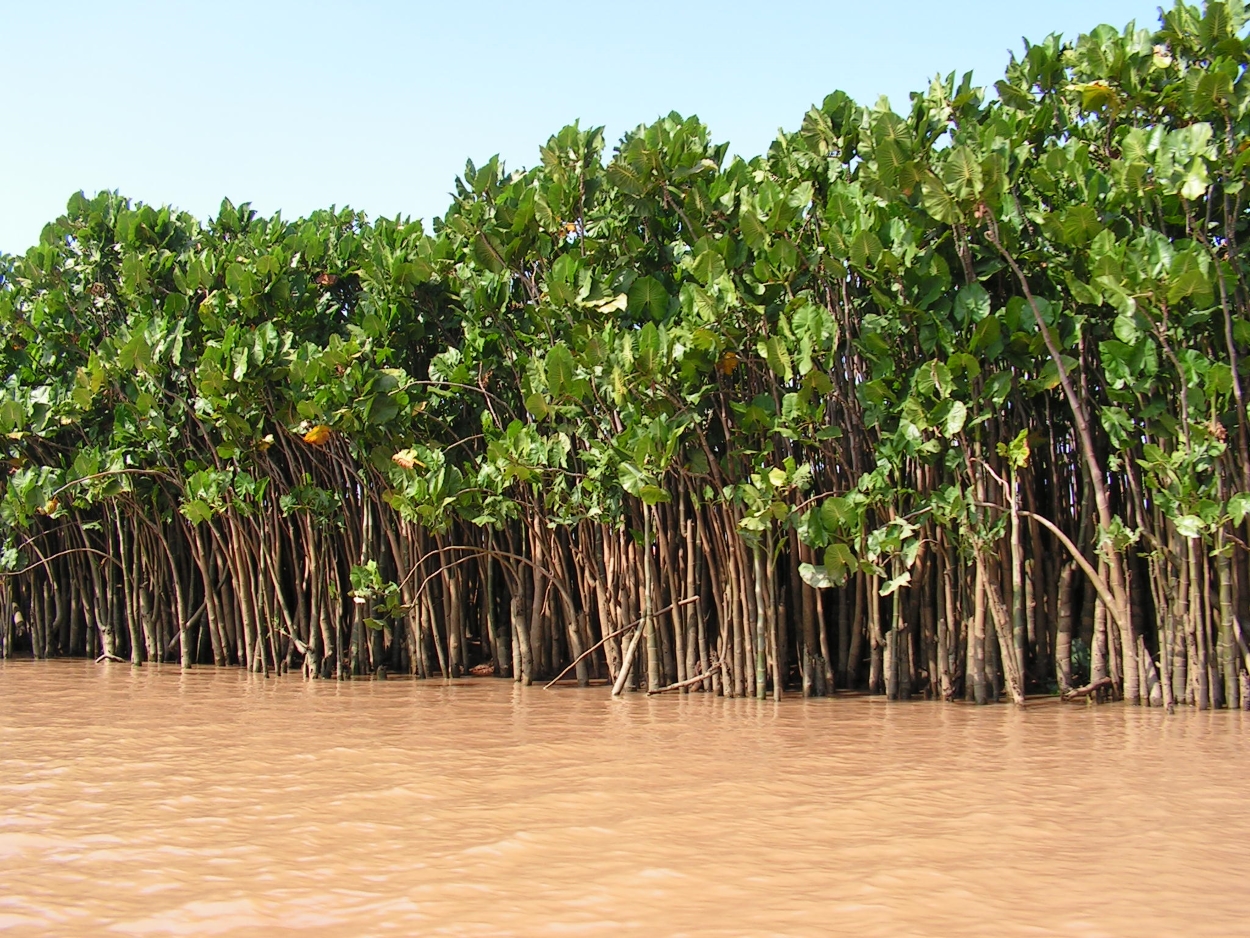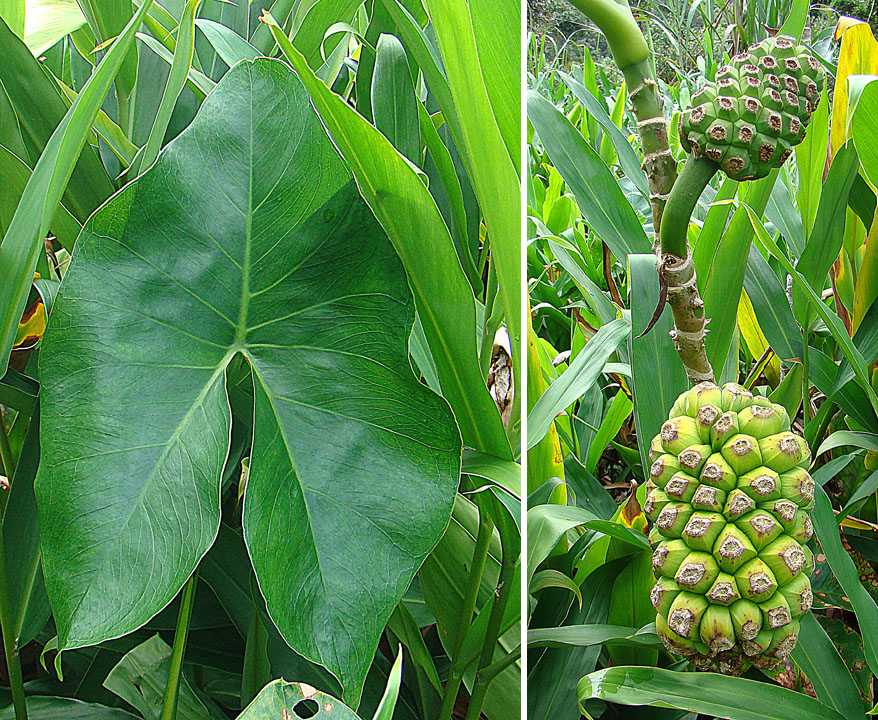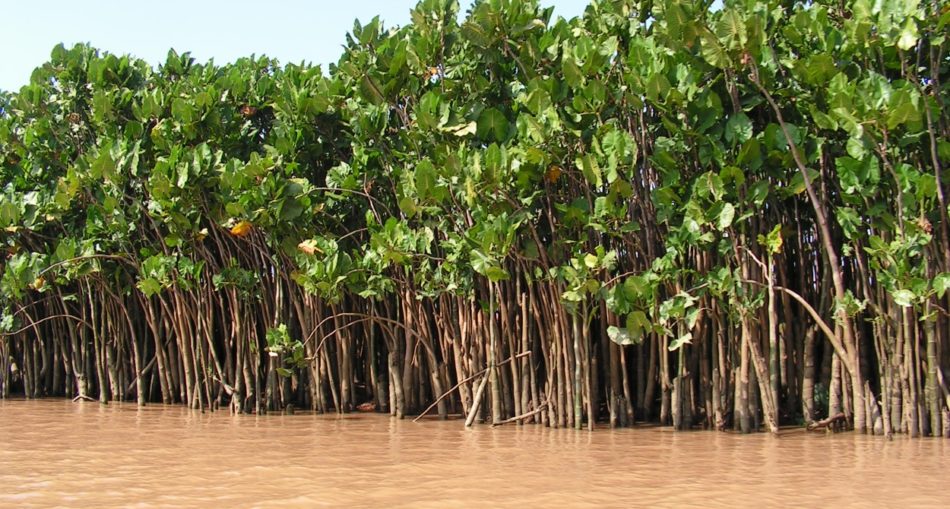You can be sure to find the Montrichardia arborescens plants growing along the riverbanks of Guyana. They thrive in river banks, swamps and creeks in full sunlight and are quite common in mangrove habitats. While these plants are commonly known in Guyana as Moco Moco or “mukka mukka”, the scientific name of the plant is Montrichardia arborescens. Around the world, they are known as aninga, arracacho, arum lily, fruit of the devil, malanga-gratter and yautia-madera.
Interesting Tip
- There is a village in Lethem called “Ka-ya-Weng” a Makushi phrase meaning “Sky Valley” which was later renamed Moco Moco after the plants growing along Takutu River, running through the village.

Moco Moco – Photo By: Tarciso Leão (https://www.flickr.com/photos/tarcisoleao/18478957961)
Origin of the Moco-Moco
Moco-moco, as it is commonly called, is native to the tropical Americas and the West Indies. It grows in South America, in countries like Guyana, Suriname, Venezuela, French Guiana and Brazil. It can also be found in parts of the Caribbean like Puerto Rico, and also in Panama and Colombia.
Scientific Classification of Moco-Moco
- Kingdom: Plantae
- Clade: Tracheophytes
- Clade: Angiosperms
- Clade: Monocots
- Order: Alismatales
- Family: Araceae
- Genus: Montrichardia
- Species: M. arborescens
Description of the Moco-Moco
This tropical, perennial plant can be found growing along the edges of creeks, river banks, and swamps. They can grow in both salt/brackish water and freshwater. A Moco Moco plant can grow as tall as three (3) metres with a base which is often swollen. It grows about twenty-five (25) cm in width and sometimes has prickles. Leaves of the Moco Moco plant are triangular, resembling arrows with the exception of the lobes at the base. The leaf stalks can grow up to thirty (30) cm high. Flowers are spadix, which means they are a spike of tiny, closely-arranged flowers closely arranged around a fleshy axis and typically enclosed in a bract. Moco Moco infloresences produces the edible fruit. Fruuiting spadices produce an aggregate fruit which contains about eighty (80) yellow fruits. Moco Moco seeds are buoyant and float to shore where they germinate.

Moco Moco leaves and fruit – Photo by: By Dick Culbert from Gibsons, B.C., Canada – Montrichardia arborescens, leaf and fruit., CC BY 2.0, https://commons.wikimedia.org/w/index.php?curid=34451299
Uses of Moco-Moco
- The fruit (spadix) of Moco Moco can be eaten.
- Seeds can also be toasted or cooked.
- In Guyana and Suriname, the milky juice of the stem is applied to deep external cuts.
- The sap of Montrichardia arborescens is also used for nosebleeds, sore eyes and when mixed into a poultice can be applied to ulcers.
- The dried roots and leaves of Moco Moco can be talked to relieve hypertension.
- The juice of the shoots is used for shamanic practices.
- The fibre from Moco Moco stems can be made into cords, while the tissues can be used to make paper.
- Berries and fruit spikes can be used for fish bait.
- In Guyana Moco Moco stalks are tied together to create a makeshift raft.
Interesting Tip
- Plants like Montrichardia arborescens belong to the arum family (Araceae) which is a food staple in many populations of the tropics.
- They provide nutritious and high yielding crops which are used in specialist diets.
- Rio Negro fish regularly eat the fruits of Moco Moco plants.
About Moco Moco
While Moco Moco plants are not typically eaten in Guyana they are used in healing. Especially in the countryside of Guyana, the sap of Montrichardia arborescens is applied to cuts and wounds. Sometimes the stalks are cut, peeled and inner bark is scraped and applied to wounds to help in stopping the bleeding and assist in healing. You can recognize Moco Moco or Mukka Mukka as Guyanese would call it, by its distinctive triangular leaves, growing along riverbanks and reaching heights of three metres (3) tall. The next time you’re travelling on our waterways, keep an eye out for Moco Moco plants.
Article References
- https://en.wikipedia.org/wiki/Montrichardia_arborescens
- https://tropilab.com/mokomoko.html
- https://moipa.gov.gy/indigenous-villages/moco-moco/







